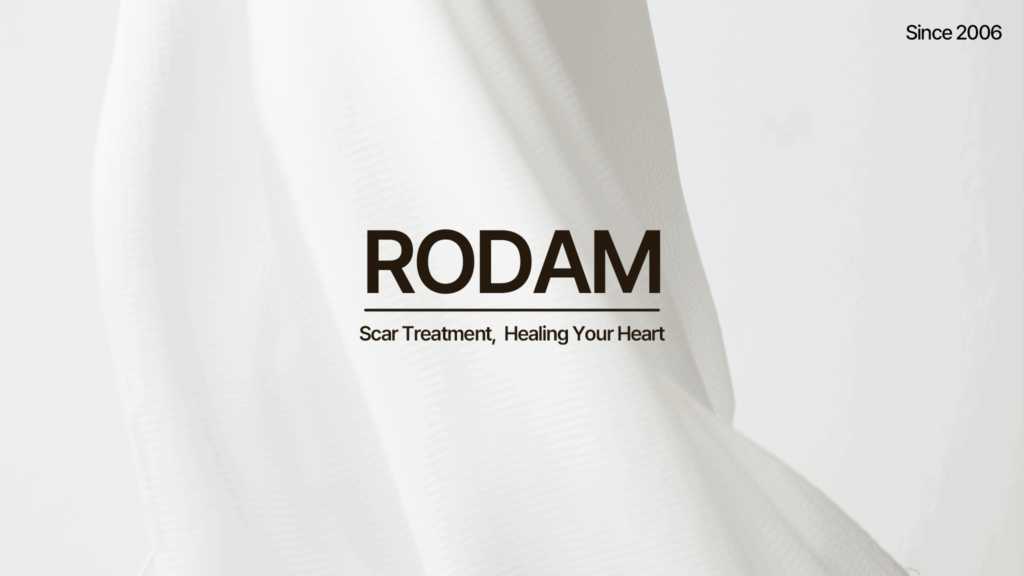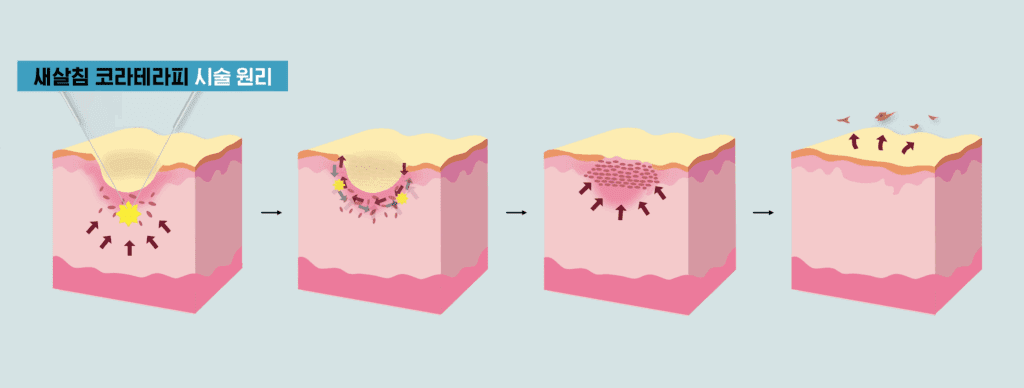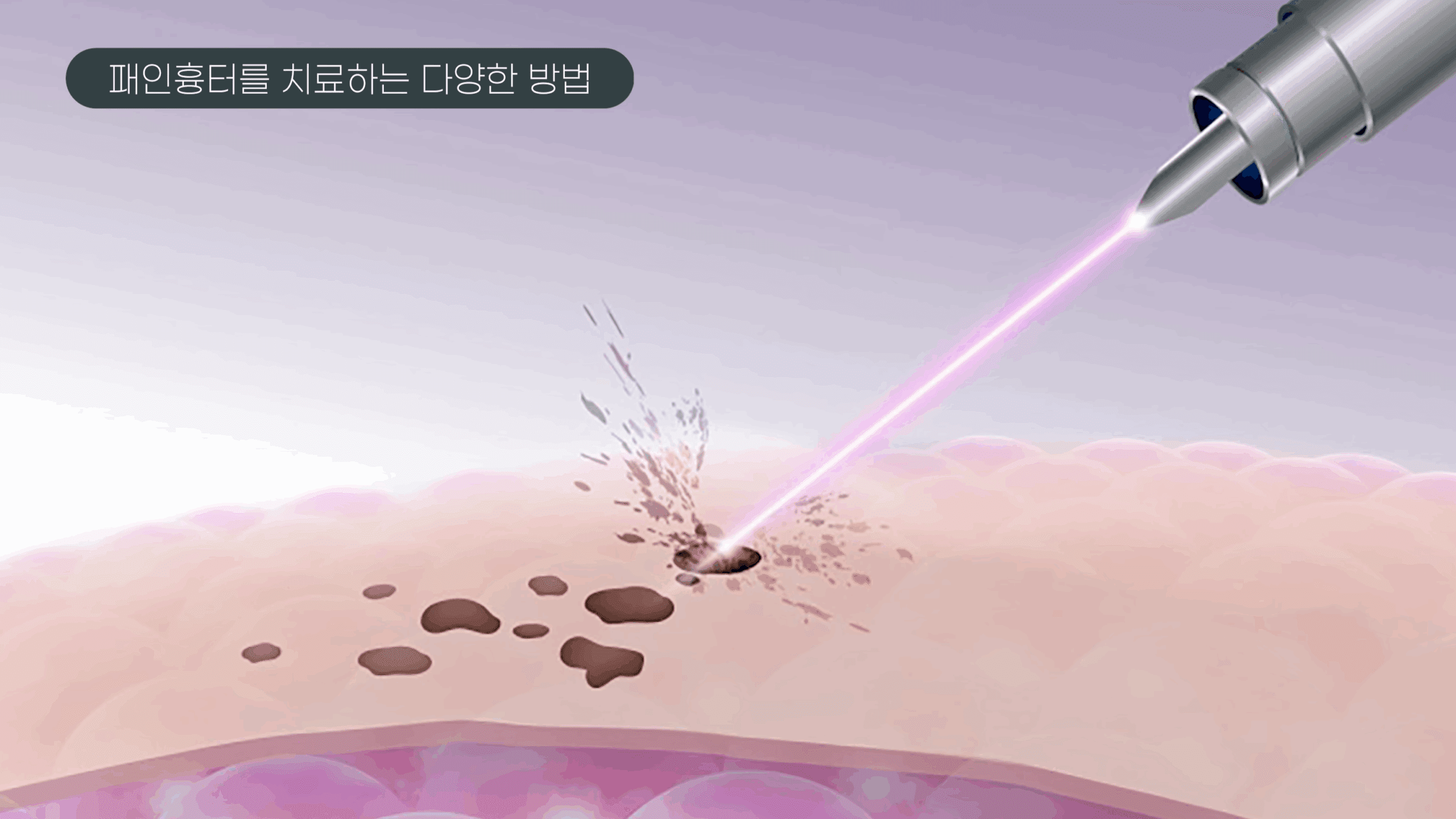
The reason why Coratherapy is more effective for treating scar tissue. Everything about Coratherapy explained by the doctor of the Korean Medicine Clinic.

Hello, this is Dr. Ikdoo Kim from Rodam Korean Medicine Clinic Gasan branch, specializing in scar removal.
Indented scars are a common skin concern for many people and can result from various causes such as acne, chickenpox, shingles, or scratches. These scars form when severe inflammation or a lack of necessary regenerative substances during the healing process causes fibrous tissues beneath the skin to tangle and pull the skin inward.
As a result, the scar appears sunken below the skin surface, creating shadows and depth that do not easily fade over time, often becoming a source of insecurity.
Therefore, the most important factors in treating indented scars are how effectively the adhesion beneath the scar can be released and how much the regenerative capacity can be enhanced.
Today, I would like to introduce “Coratherapy” and explain why it is more effective for indented scars.

How is Coratherapy performed?

Coratherapy is a treatment based on the principles of Korean medicine, introduced in 2006 by Rodam Korean Medicine Clinic for scar treatment.
Using fine needles tailored to the shape and depth of the scar, Coratherapy stimulates the dermal layer of the scar and releases the adhered fibrous tissues.
This process triggers the body to focus blood flow on the treated area, inducing a natural regenerative response.
Blood contains fibroblasts that produce collagen and elastin, which help fill the indented area with new tissue. This gradually flattens the scar and blends it naturally with the surrounding skin.
Rodam Korean Medicine Clinic’s Coratherapy specifically uses a dedicated needle called the ‘incision needle’ and a unique treatment technique known as the ‘cross-needle method.’ This allows for customized treatment of each scar by adjusting the angle, rotation, and insertion direction to stimulate the dermal layer or the intermediate layer between the dermis and subcutaneous fat.

Why is Coratherapy more effective for treating indented scars?

There are various methods for treating indented scars, such as peeling, lasers, radiofrequency, and injections.
Peeling and laser treatments damage the skin surface by 80 and expect 100 in regeneration. However, if the epidermis does not fully regenerate or becomes dry, the scar may deepen, resulting in rolling scars with more pronounced shadows.
Radiofrequency or ampoule spray treatments can release the adhesion beneath the scar but often lack precision, potentially causing unnecessary damage to surrounding tissues.
Injection treatments use substances like PLA or PDLLA to stimulate fibroblasts, but these methods rely on artificial regeneration, which may lead to side effects such as nodules.
In contrast, Coratherapy precisely targets and releases the adhesion beneath the scar while causing minimal damage to the skin surface, ensuring faster recovery and fewer side effects.
It also promotes natural regeneration through blood flow, leading to abundant collagen production and effective tissue regeneration.
<Advantages and Expected Effects of Coratherapy>
- Customized treatment tailored to the shape and depth of the scar.
- Minimal damage to the skin surface, resulting in faster recovery.
- Promotes natural skin regeneration, leading to abundant collagen production.
- Fewer side effects and high satisfaction after treatment.
- Safe procedure without anesthesia or incisions.

The most important aspect of treating indented scars is accurately releasing the adhesion beneath the scar and naturally filling the space with new tissue.
Coratherapy adheres to this principle, utilizing the skin’s natural healing ability to help restore healthy and smooth skin.
I hope this article has helped alleviate some of your concerns about scars.
For more detailed information, please visit the ‘Rodam Korean Medicine Clinic’ YouTube channel.

